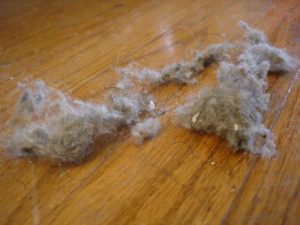 Nice update from a large crowd sourced study I posted about September 1, 2015. Main finding: all our homes are teaming with microorganisms, which vary according to sex of occupants, pets, geographical location and humidity. In total, the indoor dust contained more than sixty-three thousand species of fungi and a hundred and sixteen thousand species of bacteria. The scientists have posted it all online and members of the public can download the complete data set and hunt for new correlations and patterns. Just remember that all these microbes in our lives is completely normal, and many species are important partners in maintaining our health. Excerpts from Emily Anthes's article in the New Yorker:
Nice update from a large crowd sourced study I posted about September 1, 2015. Main finding: all our homes are teaming with microorganisms, which vary according to sex of occupants, pets, geographical location and humidity. In total, the indoor dust contained more than sixty-three thousand species of fungi and a hundred and sixteen thousand species of bacteria. The scientists have posted it all online and members of the public can download the complete data set and hunt for new correlations and patterns. Just remember that all these microbes in our lives is completely normal, and many species are important partners in maintaining our health. Excerpts from Emily Anthes's article in the New Yorker:
Dust talks. That clump of gray fuzz hiding under the couch may look dull, but it contains multitudes: tiny errant crumbs of toast, microscopic fibres from a winter coat, fragments of dead leaves, dog dander, sidewalk grit, sloughed-off skin cells, grime-loving bacteria. “Each bit of dust is a microhistory of your life,” Rob Dunn, a biologist at North Carolina State University, told me recently. For the past four years, Dunn and two of his colleagues—Noah Fierer, a microbial ecologist at the University of Colorado Boulder, and Holly Menninger, the director of public science at N.C. State—have been deciphering these histories, investigating the microorganisms in our dust and how their lives are intertwined with our own.
The scientists began with a small pilot study, recruiting forty families in the Raleigh-Durham area to swab nine locations in their homes. When the researchers analyzed these cotton swabs and sequenced the fragments of bacterial DNA that they contained, they found that even the most sparkling houses were teeming with microbial squatters—more than two thousand distinct types, on average. Different rooms formed distinct ecological niches: kitchens were popular among the bacteria that grow on produce, whereas bedroom and bathroom surfaces were colonized by those that typically dwell on the skin. (In a troubling discovery, Dunn and his colleagues learned that, from a microbiological perspective, toilet seats and pillowcases look strikingly similar.)
In many ways, these findings were predictable. What the researchers had some difficulty making sense of was the variation that they observed between homes. “What, really, is determining what lives in your house versus my house?” Dunn asked. To answer that question, they expanded the study to a larger, more diverse set of homes—about eleven hundred in total, from across the continental United States—and asked volunteers to swab the trim around their interior doorways. “We focussed on that because nobody ever cleans it,” Fierer told me. “Or we don’t clean it very often—maybe you’re an exception.” (I am not.) To provide a point of comparison, each volunteer also collected dust from an exterior door and then mailed the samples to Fierer’s Colorado lab.
Fierer and his team isolated, amplified, and sequenced the DNA that was present in each sample, listing the types of bacteria and fungi that they found. The list soon grew long. “The diversity was just crazy,” Dunn said. In total, the indoor dust contained more than sixty-three thousand species of fungi and a hundred and sixteen thousand species of bacteria. For the fungi, location was king. Houses in eastern states had different fungal communities than those in western ones. Ditto homes in humid climates compared with those in dry ones. In fact, the geographic correlation was so strong that Dunn and Fierer have since shown, in a separate paper, that they can use fungal DNA to determine, to within about a hundred and fifty miles, where in the United States a dust sample originated.
Bacterial communities, on the other hand, were shaped less by a home’s location than by its occupants. “We’re really the dominant sources—us and our pets are the dominant sources—of bacteria inside homes,” Fierer said. The fur factor loomed especially large. Dogs introduced unique drool and fecal microbes into a home and tracked in soil dwellers from outside. Cats also changed a home’s microbial makeup, but more modestly, perhaps because they are smaller and venture outside less often. By analyzing the bacterial DNA in dust, the researchers were able to predict whether a home contained a dog with ninety-two-per-cent accuracy and a cat with eighty-three-per-cent accuracy.
The sex of a home’s human occupants also played a role in shaping the indoor ecosystem. Lactobacillus bacteria, which are a major component of the vaginal microbiome, were most abundant in homes in which women outnumbered men. When men were in the majority, however, different bacteria thrived: Roseburia, which normally lives in the gut, and Corynebacterium and Dermabacter, which both inhabit the skin. Corynebacterium is known to occupy the armpit and contribute to body odor.
Most of our microscopic roommates are unlikely to present a real threat; many species of bacteria, scientists now know, are crucial partners in maintaining our health. “We’re surrounded by microbes all the time, and that’s not a bad thing,” Fierer said.
